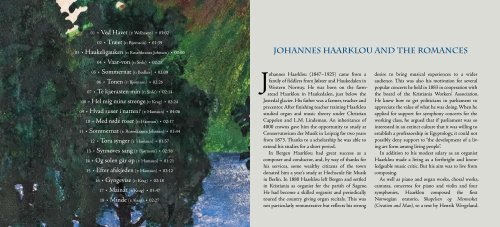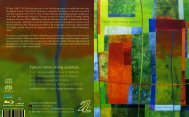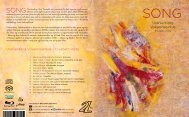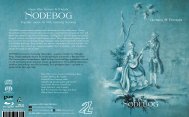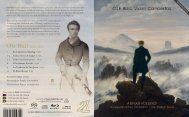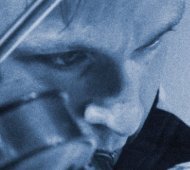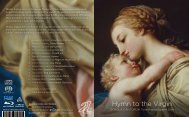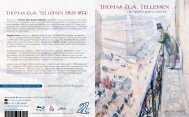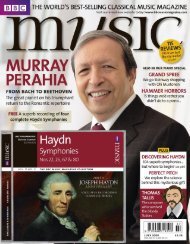You also want an ePaper? Increase the reach of your titles
YUMPU automatically turns print PDFs into web optimized ePapers that Google loves.
01 • Ved Havet (t: Welhaven) • 03:02<br />
02 • Træet (t: Bjørnson) • 01:39<br />
03 • Haukeligauken (t: Rosenkrantz Johnsen) • 02:00<br />
04 • Vaar-von (t: Sivle) • 02:28<br />
05 • Sommernat (t: Bødker) • 02:09<br />
06 • Tonen (t: Bjørnson) • 02:26<br />
07 • Te kjærasten min (t: Sivle) • 02:14<br />
08 • Hel mig mine strenge (t: Krag) • 02:24<br />
09 • Hvad suser i natten? (t: Hamsun) • 04:06<br />
10 • Med røde roser (t: Hamsun) • 02:17<br />
11 • Sommernat (t: Rosenkrantz Johnsen) • 01:44<br />
12 • Tora synger (t: Hamsun) • 01:57<br />
13 • Synnøves sang (t: Bjørnson) • 02:58<br />
14 • Og solen går op (t: Hamsun) • 01:21<br />
15 • Efter afskjeden (t: Hamsun) • 02:12<br />
16 • Gyngevise (t: Krag) • 02:18<br />
17 • Mainat (t: Krag) • 03:47<br />
18 • Minde (t: Krag) • 02:27<br />
Johannes haarklou and the romances<br />
Johannes Haarklou (1847–1925) came from a<br />
family of fiddlers from Jølster and Haukedalen in<br />
Western Norway. He was born on the farm-<br />
stead Haarklou in Haukedalen, just below the<br />
Jostedal glacier. His father was a farmer, teacher and<br />
precentor. After finishing teacher training Haarklou<br />
studied organ and music theory under Christian<br />
Cappelen and L.M. Lindeman. An inheritance of<br />
4000 crowns gave him the opportunity to study at<br />
Conservatorium der Musik in Leipzig for two years<br />
from 1873. Thanks to a scholarship he was able to<br />
extend his studies for a short period.<br />
In Bergen Haarklou had great success as a<br />
composer and conductor, and, by way of thanks for<br />
his services, some wealthy citizens of the town<br />
donated him a year’s study at Hochscule für Musik<br />
in Berlin. In 1880 Haarklou left Bergen and settled<br />
in Kristiania as organist for the parish of Sagene.<br />
He had become a skilled organist and periodically<br />
toured the country giving organ recitals. This was<br />
not particularly remunerative but reflects his strong<br />
desire to bring musical experiences to a wider<br />
audience. This was also his motivation for several<br />
popular concerts he held in 1883 in cooperation with<br />
the board of the Kristiania Workers’ Association.<br />
He knew how to get politicians in parliament to<br />
appreciate the value of what he was doing. When he<br />
applied for support for symphony concerts for the<br />
working class, he argued that if parliament was so<br />
interested in an extinct culture that it was willing to<br />
establish a professorship in Egyptology, it could not<br />
possibly deny support to “the development of a living<br />
art form among living people”.<br />
In addition to his modest salary as an organist<br />
Haarklou made a living as a forthright and knowledgeable<br />
music critic. But his aim was to live from<br />
composing.<br />
As well as piano and organ works, choral works,<br />
cantatas, concertos for piano and violin and four<br />
symphonies, Haarklou composed the first<br />
Norwegian oratorio, Skapelsen og Mennesket<br />
(Creation and Man), to a text by Henrik Wergeland.


